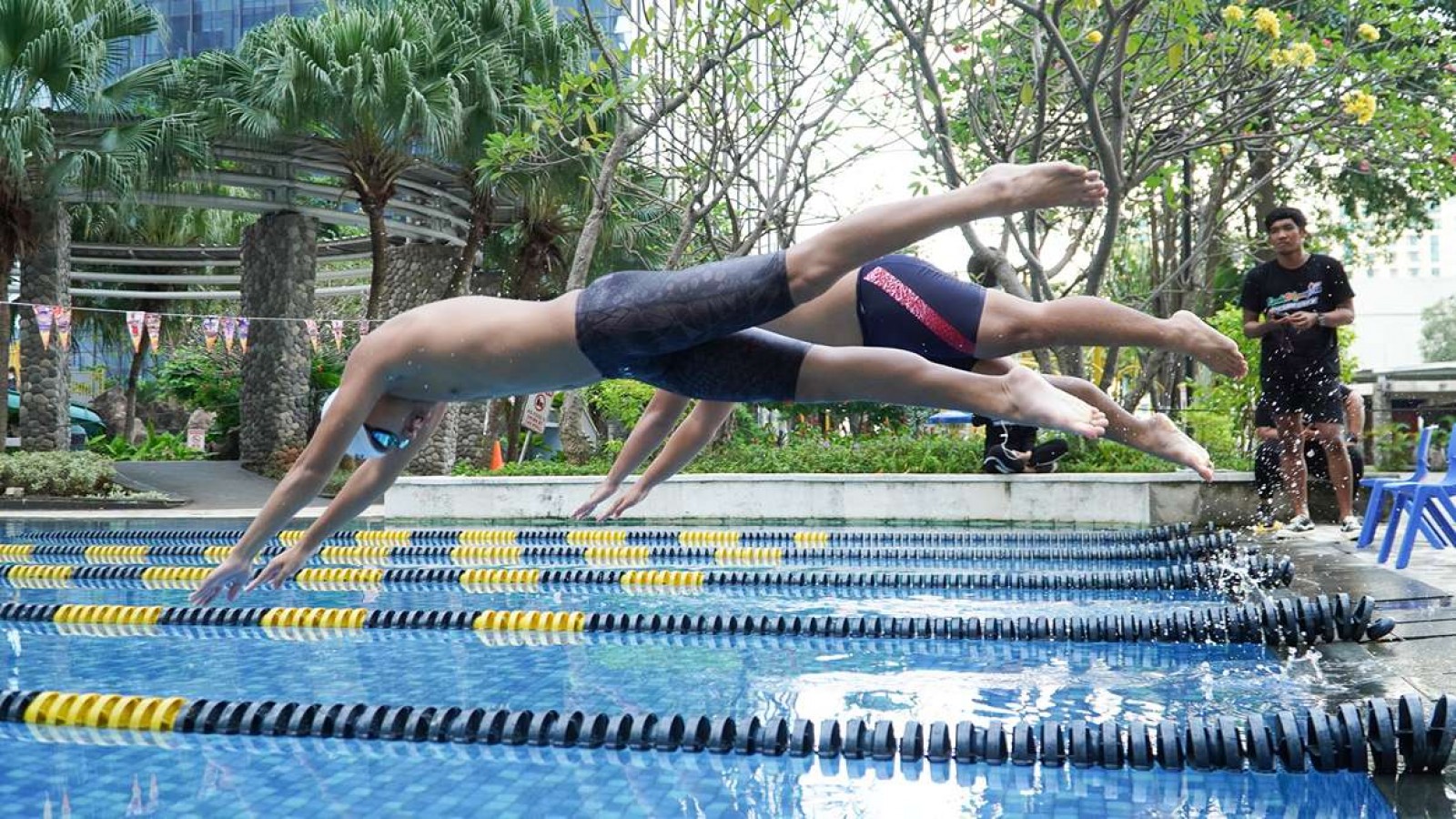How Swimming Drills Improve Your Technique: A Comprehensive Guide

If you want to become a better swimmer, simply doing lap after lap isn’t enough. You have to practice the right swimming drills too! These targeted exercises help refine your strokes, improve efficiency, and build better technique.
In this guide, we’ll explore how swimming drills improve your technique, what they focus on, when to incorporate them into your training, and essential tips to maximize your progress.
How Swimming Drills Can Improve Your Technique
Swimming is about moving efficiently, powerfully, and with control. That’s where swimming drills come in. These targeted exercises help you refine your technique, strengthen key muscles, and improve your overall performance in the water. Here’s how they can make a big difference in your swimming:
1. Isolating and Strengthening Specific Muscles
Some swimming drills are designed to target specific muscle groups that play a crucial role in swimming. For example, kickboard drills isolate the legs, helping to build stronger and more efficient kicks.
Other drills focus on upper body strength, especially in the smaller muscle groups that are often overlooked but are essential for stroke power and stability. By strengthening these muscles, you can enhance your overall swimming performance.
2. Identifying and Correcting Bad Habits
With so many moving parts in swimming, it’s easy to develop bad habits without even realizing it. Drills help pinpoint areas where your technique may need improvement, whether it’s poor body positioning, inefficient breathing, or incorrect stroke mechanics.
By practicing drills regularly, you can correct these issues and reinforce good habits, preventing you from falling back into ineffective techniques.
3. Making You Faster and More Efficient
Swimming drills contribute to both aerobic and anaerobic fitness, helping you become a faster and more efficient swimmer.
Aerobic drills focus on endurance, allowing you to swim longer distances with less fatigue, while anaerobic drills emphasize short, high-intensity bursts that improve speed and power.
By incorporating both types into your training, you can enhance your overall swimming capacity and efficiency.
4. Making It All Instinctive
Swimming requires you to think about multiple factors at once—your stroke, breathing, pacing, and body position. Over time, drills help create neural pathways that make these movements feel natural and automatic.
Instead of consciously thinking about every aspect of your technique, your body instinctively knows what to do, allowing you to swim more fluidly and efficiently.
Key Focus Areas of Swimming Drills
Swimming drills are designed to improve different aspects of your technique, making you a more efficient and confident swimmer. Here are the key focus areas of swimming drills and how they help:
A. Kicking
Strong and efficient kicks help propel you through the water faster. Many swimming drills target leg strength and technique to ensure you’re generating the most power with each kick while conserving energy.
Using a kickboard, for example, allows you to isolate your legs and focus on building endurance and speed.
B. Body Position
Proper body positioning is key to reducing drag and moving efficiently through the water. If your head lifts too high, your legs will drop, making you slower and less streamlined.
Drills that emphasize correct posture help you maintain a horizontal position, allowing for smoother and faster swimming with less effort.
C. Arm Stroke
Your arm stroke is a crucial part of swimming, providing most of the propulsion. Since it involves multiple phases, drills help break down and refine each step so you can swim with better technique and efficiency.
Focusing on each phase separately allows you to develop a more powerful and effective stroke.
D. Strength
Swimming requires full-body strength, from your core to your arms and legs. Certain drills help target swim-specific muscles, improving overall power and endurance in the water.
By building strength in key areas, you’ll be able to maintain better form and generate more force with each movement.
E. Endurance
Swimming drills designed for endurance help you swim longer distances without tiring quickly. By gradually increasing the intensity and duration of your workouts, these drills train your body to sustain effort over extended periods, improving both stamina and efficiency.
F. Breathing
Mastering your breathing technique is essential for becoming a confident and strong swimmer. Drills that focus on breath control help you develop a smooth and rhythmic breathing pattern, reducing fatigue and improving your overall performance.
The more comfortable you become with breathing in the water, the easier and more efficient your strokes will be.
When Is the Best Time to Do Swimming Drills?
The best time to do swimming drills depends on your goal. Whether you're learning a new skill or trying to reinforce good technique under pressure, timing your drills correctly can make a big difference in your progress.
1. When Learning a New Skill
If you're working on improving a specific aspect of your stroke—like a high elbow pull or correcting a thumbs-first entry—you should do drills when you're fresh and fully focused.
The best time for this is right after your general warm-up, before fatigue sets in. Going slow and being methodical will help you grasp the movement properly without distractions.
2. When Mastering and Reinforcing Technique
Once you've learned the basics of a new skill, you need to make it second nature. To do this, incorporate drills during different levels of stress. For example, in the middle of a tough workout, during a high-intensity set, or even at the end of a session when your body is tired.
Training under fatigue helps you maintain good form even when exhausted, ensuring that proper technique becomes automatic in real race conditions.
Tips for Success with Swimming Drills
Swimming drills are a great way to refine your technique, but to get the most out of them, you need to approach them the right way. Here are some key tips to help you succeed with swimming drills:
A. Be Patient
Swimming drills are all about precision, not speed. Sometimes, you need to slow down to perfect your technique before you can swim faster.
Focus on proper form, controlled movements, and consistency. Over time, this patience will pay off, making you a stronger and more efficient swimmer.
B. Follow a Plan
Improving your swimming isn’t about randomly practicing drills—it requires a structured approach. Follow a well-designed training plan that strategically incorporates drills to target specific weaknesses and refine your technique over time. This way, you’ll see steady progress.
C. Don’t Make It “One-And-Done”
Just because you’ve mastered a drill once doesn’t mean you should stop doing it. Swimming improvement is an ongoing process.
Keep practicing drills regularly to maintain and refine your technique, ensuring that good habits stay with you for the long run.
Boost Your Swimming Technique With The Right Drills!
Swimming drills are essential for improving technique, increasing efficiency, and building endurance. By incorporating the right drills into your training routine and practicing them consistently, you’ll see significant progress in your swimming skills.
Looking to take your swimming skills to the next level? The Swimming Program at Rockstar Academy is designed to help swimmers of all levels build strength, endurance, and technique through structured swimming workouts led by expert coaches.
As a Rockstar Academy student, you will also train for competitions like RockOlympics or simply want to improve your strokes, our program at the Sports & Performing Arts Academy provides the perfect environment to grow and excel in the water.
And the best part? You can experience it for yourself with a free trial session! Come dive in and see how our program can help you become a stronger, faster, and more confident swimmer.
FAQ
What are drills for swimming?
Swimming drills are specific exercises that focus on improving technique, strength, and efficiency in the water.
Why are swimming drills important?
They help refine stroke mechanics, build muscle memory, improve endurance, and make swimming more efficient and faster.



